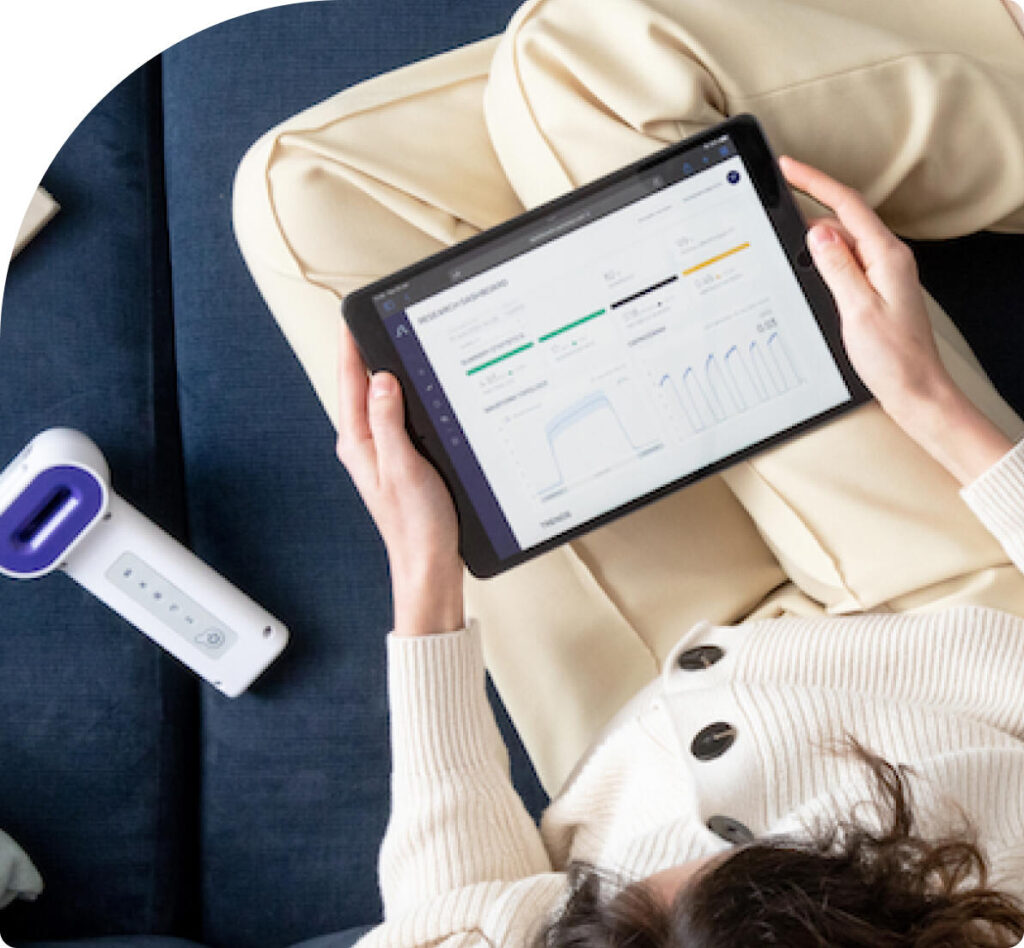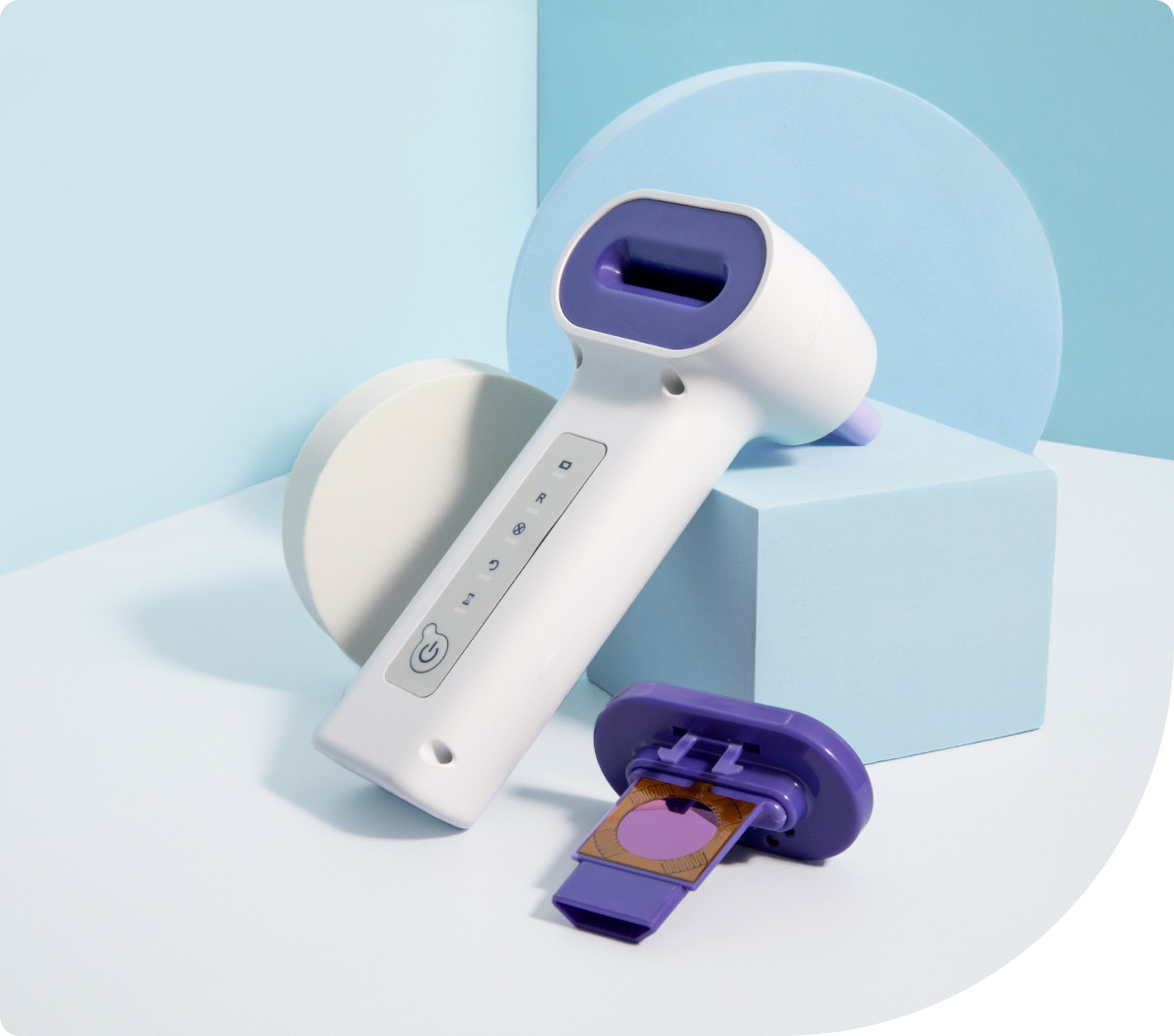A new AI-powered device called N-Tidal Diagnose is about to change how doctors diagnose lung conditions, particularly chronic obstructive pulmonary disease (COPD). This portable breath analyzer promises to deliver results in just five minutes compared to traditional tests that can take over half an hour.
COPD affects approximately 3 million people in the UK, with two-thirds unaware they have the condition. Despite this lack of diagnosis, it’s the second most common cause of emergency hospital admissions.

How It Works: Simpler Than Traditional Tests
Until now, diagnosing COPD required a spirometry test where patients forcefully exhale into a device – a process many find exhausting and time-consuming.
Colin Best, a 67-year-old COPD patient from Suffolk, described his experience: “The spirometry test is exhausting. You have to have several tests and each one has a gap of five to 10 minutes between to let you relax. It took me a year to convince them there was something seriously wrong whereas with that machine it’s only five minutes.”
The N-Tidal device works differently. Patients simply breathe normally into a handset that measures carbon dioxide levels. This data is sent to a cloud platform where AI software analyzes it in real-time.
Similar Posts:
AI Training and Accuracy
Dr. Ameera Patel, chief executive of TidalSense which developed the device, explained: “In total, we’ve collected over 2.5 million patient breaths from every cardio-respiratory condition that you can think of and then we’ve trained the machine learning model. We’ve taught it to discriminate COPD from everything else that can look like COPD. So that’s asthma, heart failure, lung cancer.”
The device has received regulatory clearance and CE-marking under EU Medical Device Regulations for COPD diagnosis.
Benefits for Patients and Doctors
Dr. Simon Rudland, a GP in Suffolk, described the technology as “revolutionary” for several reasons:
- Patients no longer need to travel to specialized hubs for testing
- Special training requirements for staff are minimal – taking just 10 minutes
- Treatment can begin immediately after diagnosis
- Patients avoid being prescribed incorrect medications
“With that diagnosis I can initiate treatment. I don’t have to wait. They don’t get put on the wrong drugs,” Dr. Rudland said.
Broader Impact on Healthcare
The timing of diagnosis is crucial since COPD, while not curable, is treatable. Earlier treatment leads to better long-term outcomes for patients.
Currently, it’s estimated about 1.2 million people in the UK have diagnosed COPD, with as many as 2 million people undiagnosed. The technology could also help reduce NHS waiting times and costs.
The sensor has been approved for use across the EU and is expected to start being used in doctors’ surgeries in a matter of weeks. Researchers are also exploring its potential for diagnosing asthma in the future.
Frequently Asked Questions
COPD (Chronic Obstructive Pulmonary Disease) is a group of lung conditions including emphysema and chronic bronchitis that cause breathing difficulties. It’s challenging to diagnose because symptoms develop slowly, often being mistaken for aging or other conditions. Traditional diagnosis requires spirometry tests which are time-consuming, require specialized equipment, and trained personnel, creating barriers to early detection. This explains why two-thirds of the UK’s 3 million COPD sufferers remain undiagnosed.
The N-Tidal Diagnose device works by having patients breathe normally into a handheld device that measures carbon dioxide levels in each breath. This data is sent to a cloud platform where AI software analyzes it in real-time. In contrast, traditional spirometry tests require patients to forcefully exhale into equipment, which many find exhausting and uncomfortable. The AI test takes just five minutes compared to traditional spirometry that can take 30+ minutes, and patients don’t need to visit specialized clinics for testing.
The N-Tidal Diagnose device has been trained on over 2.5 million breath samples from patients with various respiratory conditions. This extensive training has enabled the AI to accurately distinguish COPD from similar conditions like asthma, heart failure, and lung cancer. The device has received regulatory clearance and CE-marking under EU Medical Device Regulations, indicating it has met required accuracy and safety standards for clinical use in diagnosing COPD.
The N-Tidal Diagnose device has already received regulatory approval for use across the EU and is expected to be available in doctors’ surgeries in the UK within a matter of weeks. The technology requires minimal training for healthcare staff (about 10 minutes), making it easy to implement widely. This rapid deployment could significantly improve access to early diagnosis for the estimated 2 million people with undiagnosed COPD in the UK.
While COPD isn’t curable, early diagnosis enables prompt treatment that can significantly improve long-term outcomes for patients. Early intervention can slow disease progression, reduce the frequency and severity of flare-ups, and improve quality of life. It also prevents patients from being prescribed incorrect medications and reduces emergency hospital admissions, which account for one in eight hospital admissions, with a third of these patients being undiagnosed before hospitalization.
Yes, researchers are already exploring how the N-Tidal technology could be adapted to diagnose other respiratory conditions, particularly asthma. The system’s ability to analyze breath patterns using AI makes it potentially valuable for a range of respiratory diagnoses. The technology works by detecting subtle differences in carbon dioxide patterns that are unique to different conditions, and its developers at TidalSense continue to expand its capabilities through ongoing research and clinical trials.



















